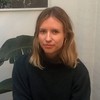BBC documentary series Blue Planet II showed the impact of plastic pollution on sea creatures. Photo courtesy BBC.
Siegle, however, sees the anti-plastic movement as bigger than the Instagram generation. As ethical living columnist for the Guardian and The One Show contributor, she has been reporting on plastic waste for over a decade and thinks that the problem engages “a real variety of people.”“This is the one eco issue that I’ve found that has resonance across regions, class, socio-economic background, and political viewpoints,” she says. “We did one beach clean and there was a guy who was a UKIP councillor. I don’t want to make judgements on that basis, but I was surprised to see him there. We had a chat about plastic and he felt very strongly about it.”Indeed more than 162,000 people responded to a recent government consultation on plastic waste, an unprecedented number of whom supported tougher action on single-use plastics. “I think it chimes with totally different people and different personalities,” says Siegle.Seeing an image of a beautiful woman with a string bag slung over her shoulder, shopping for loose vegetables at her local farmers market, feels pretty similar to scrolling over Deliciously Ella hawking her latest plant-based cookbook.
Shelves of pasta, oats, pulses, and other dry foods at Harmless, a plastic-free shop in North London. Photo by the author.
Tami Jarvis, founder of Harmless.
For all its promises of a back-to-basics existence, it’s hard to separate the plastic-free food trend from the unchecked consumerism that arguably got us into this mess. Starbucks may have banned plastic straws (and to much promotional fanfare), but the company still wants us to buy endless cappuccinos in notoriously hard to recycle cups. Nestle’s recent pledge to make all of its packaging recyclable or reusable by 2025 was slammed by Greenpeace as “green-washing baby steps … full of ambiguous or non-existent targets.”"Before social media came along, we all lived by newspapers. We were fed the information and whatever was given to us. But now with the internet, it’s a domino effect."
